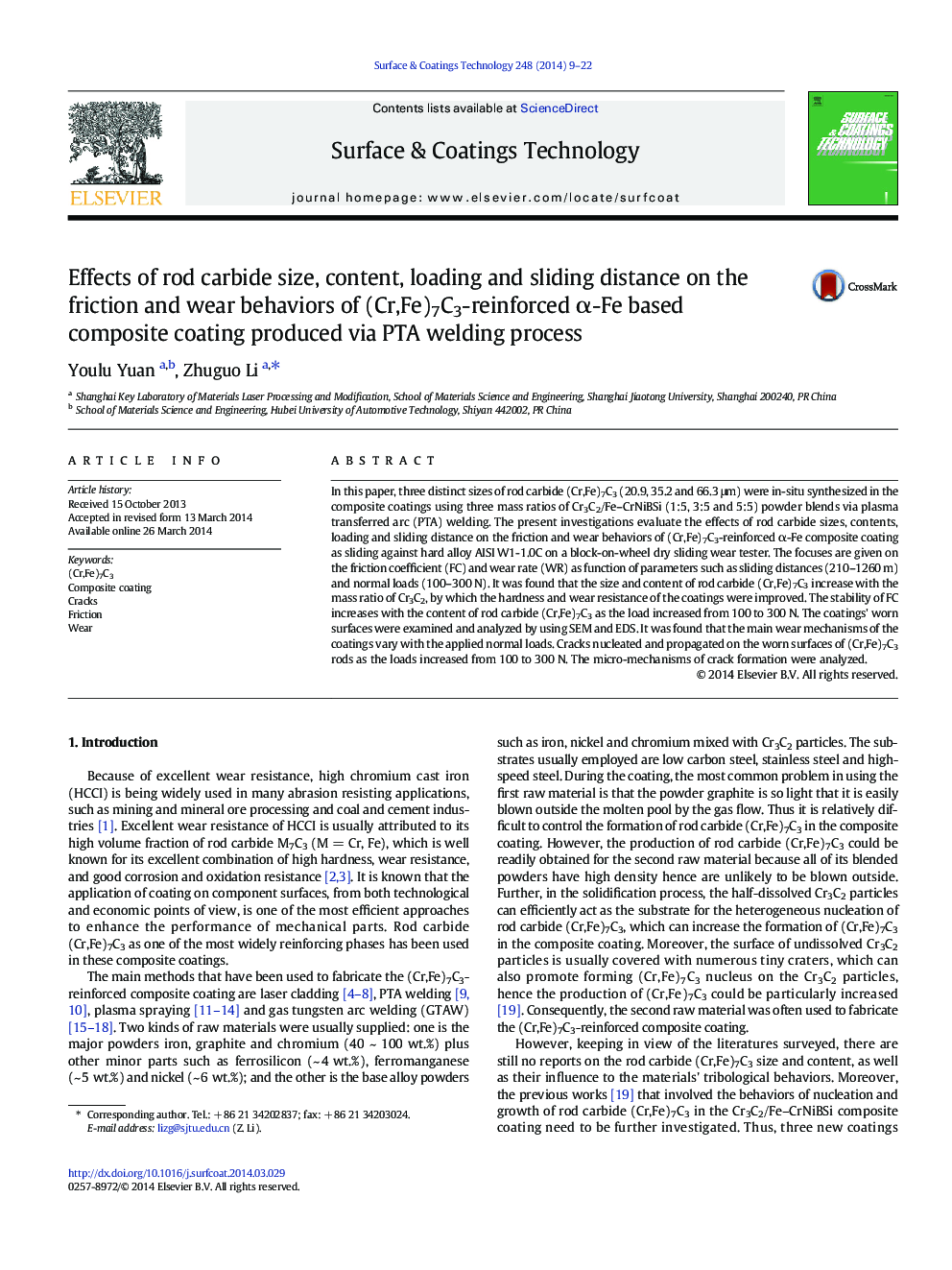| Article ID | Journal | Published Year | Pages | File Type |
|---|---|---|---|---|
| 1657550 | Surface and Coatings Technology | 2014 | 14 Pages |
Abstract
In this paper, three distinct sizes of rod carbide (Cr,Fe)7C3 (20.9, 35.2 and 66.3 μm) were in-situ synthesized in the composite coatings using three mass ratios of Cr3C2/Fe-CrNiBSi (1:5, 3:5 and 5:5) powder blends via plasma transferred arc (PTA) welding. The present investigations evaluate the effects of rod carbide sizes, contents, loading and sliding distance on the friction and wear behaviors of (Cr,Fe)7C3-reinforced α-Fe composite coating as sliding against hard alloy AISI W1-1.0C on a block-on-wheel dry sliding wear tester. The focuses are given on the friction coefficient (FC) and wear rate (WR) as function of parameters such as sliding distances (210-1260 m) and normal loads (100-300 N). It was found that the size and content of rod carbide (Cr,Fe)7C3 increase with the mass ratio of Cr3C2, by which the hardness and wear resistance of the coatings were improved. The stability of FC increases with the content of rod carbide (Cr,Fe)7C3 as the load increased from 100 to 300 N. The coatings' worn surfaces were examined and analyzed by using SEM and EDS. It was found that the main wear mechanisms of the coatings vary with the applied normal loads. Cracks nucleated and propagated on the worn surfaces of (Cr,Fe)7C3 rods as the loads increased from 100 to 300 N. The micro-mechanisms of crack formation were analyzed.
Keywords
Related Topics
Physical Sciences and Engineering
Materials Science
Nanotechnology
Authors
Youlu Yuan, Zhuguo Li,
